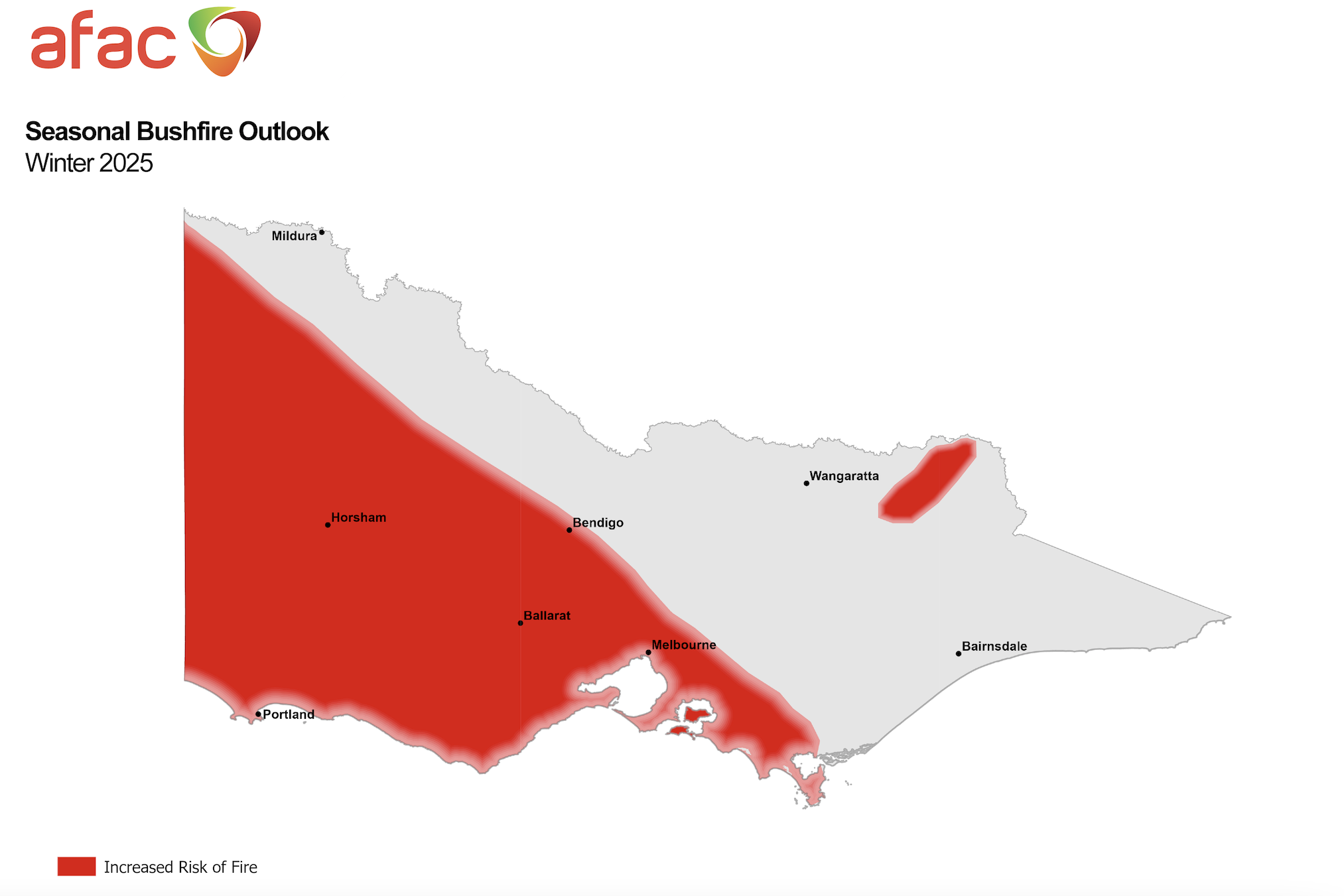General News
6 June, 2025
Increased fire risk for winter
Central Victorians will be facing an above average bush-fire risk this winter, following a warm and dry autumn.

According to the Australasian Fire and Emergency Service Authorities Council (AFAC) Australian seasonal bushfire outlook, March and April saw the fourth highest temperatures on record, below average rainfall across much of Victoria and an extension of the Fire Danger Period in some parts of the state for the first time since 2019.
These conditions, coupled with existing underlying dryness, has led to a higher level of dried grass and vegetation.
As a result, an above average bushfire risk is predicted for much of Central Victoria.
According to the AFAC, the increased risk isn’t for long-running bushfires, but events caused by uncontrolled burn-offs and other activities.
However, fires are still possible on dry and windy days in areas with dry or cured vegetation.
Goldfields Group Officer Peter Higgins agrees there is still a major fire risk, highlighting the current dry conditions.
“The biggest problem we face is that we are still dry. Terribly, terribly dry. This winter, unless we get significant rain, fire is a major risk even at this stage in the game,” he said.
“Take a drive from Maryborough to Talbot, Moliagul or Havelock. The thing about Maryborough is that we are surrounded by forests and those forest areas are still very dry.”
The AFAC is also urging Victorians to remain vigilant if burning-off. Burn-offs must be registered, with sufficient equipment and water to stop the fire spreading.
Weather conditions must be monitored. Burn-offs are not to be left unattended.
Mr Higgins is reminding locals to ensure their properties are maintained to reduce fire risk.
“Make sure your fire hazards are minimal, maintain your fire clean ups. Please look after your area, and be careful while it’s dry,” he said.
“Get a group going, put on a barbecue and help out the back of the house if you’re backing onto bushland. Maintain it, and keep your fuel levels low.
“It seems funny at this time of year but your fire plans should still be vivid in your memory too.”
According to the AFAC, the emergency management sector is continuing its preparedness at a state level.
Incident management personnel are doing all they can to prepare for emerging risks and respond to any emergencies.
Despite numerous Goldfields brigades switching off in response to the Emergency Services and Volunteers Fund, Mr Higgins said all Goldfields brigades are now online.
“With Goldfields, we are mainly back on. A lot of us don’t like what’s happening, but we are clearly reminded that we are here to protect the community,” he said.
“The reason we join CFA is to protect the community, and giving the community information is part of it.”
Following weeks of tumult for volunteer firefighters and farmers, Mr Higgins has also emphasised the importance of well-being.
“If you’re feeling down, have the conversation. Look after yourselves. If you’re feeling down, ring somebody,” he said.
“It’s critically dry, and people need to understand that everybody is struggling, and it is dry, dry, dry.”
The Seasonal Outlook for winter is developed by the Australian and New Zealand Fire and Emergency Services Council (AFAC) and supported by the Bureau of Meteorology, along with state and territory fire and land managers.
Locals can keep up to date with the Fire Danger Ratings on the VicEmergency app and VicEmergency website.